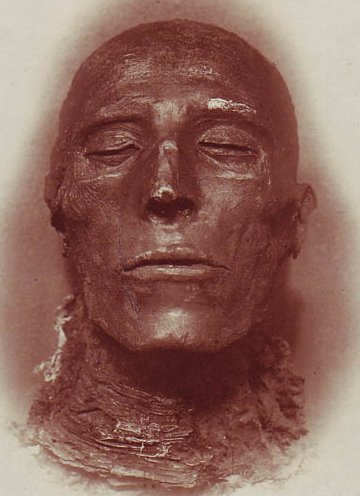
Dr. Nikola is another highly influential Victorian character who has been all but forgotten in the intervening century. The creation of Australian novelist Guy Boothby, Antonio Nikola was one of the earliest examples of a villain granted his own series. Nikola appears in five novels: A Bid for Fortune (1895), Dr. Nikola Returns (1896), The Lust of Hate (1898), Dr. Nikola’s Experiment (1899), and Farewell, Nikola (1901).
Many of the trademarks associated with later criminal geniuses begin with Nikola. Like James Bond’s nemesis Blofeld and his ever-present white Persian cat, Nikola is rarely seen without his black cat Apollyon. Fu Manchu’s pet marmoset Peko is often depicted perched on his shoulder in Sax Rohmer’s thrillers, so Apollyon is regularly described as perching on Nikola’s shoulder.
It is Fu Manchu who owes the most to Nikola. The description of Fu Manchu’s “brow like Shakespeare and face like Satan” finds a parallel in Nikola’s similarly striking features. Nikola is described as having “the Devil’s eyes.”
Even more so, Fu Manchu shares with Nikola an uncharacteristic code of honor that makes these villains somewhat sympathetic in the reader’s eye. Both villains make generous gifts to the individuals they formerly persecuted treating the entire affair as if it was merely a game.
Both Fu Manchu and Antonio Nikola are assumed names and the reader never learns the character’s true identity. Both characters employ dwarf assassins and have laboratories of lethal insects at their disposal. Finally, both Nikola and Fu Manchu studied Lamaism at a Tibetan monastery and seek an Elixir Vitae to grant them immortality.
Despite these similarities, Nikola is far more than a dry run for Sax Rohmer and Ian Fleming’s criminal masterminds for his storyline is unique in that it moves from a tale of revenge to become one of redemption as the series progresses.
Nikola’s life story unravels across the five books as the narrators and the reader learn more and more about the mysterious figure whose appeal persists despite the atrocities he commits.
TO CONTINUE READING THIS POST, PLEASE VISIT HERE.





.jpg)